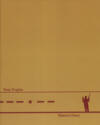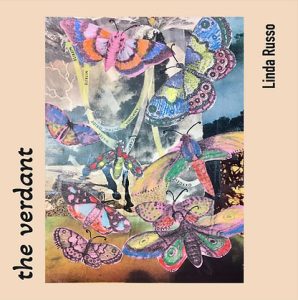Historic Diary
That history and personal memory can become one and the same is nothing new. The Internet and Facebook are merely faster ways to gather fact and thought.
That history and personal memory can become one and the same is nothing new. The Internet and Facebook are merely faster ways to gather fact and thought.
November 22, 1963 is a date noted in many an official, scholarly, artistic, and—this goes for those alive at the time and those not yet born—personal chronicle. President John F. Kennedy’s assassination was one of the first news stories to unfold on television in real time. One of the events occurring over that long weekend was the first televised murder. On Sunday, November 24, suspected assassin Lee Harvey Oswald was fatally wounded in the basement of Dallas police headquarters by nightclub owner Jack Ruby. (The President’s shooting was inadvertently recorded on the home movie Dallas businessman Abraham Zapruder was making of the Kennedy motorcade.)
The description in the paragraph above is an example of combining the historic with the personal. The writer hopefully included enough facts about the assassination while choosing to emphasize the role of television documenting it rather than the incredulity of Ruby concealing and using a gun in a locked-down area. In his Historic Diary, Tony Trigilio uses something far more effective to convey this incident than a reviewer, historian, student, grating Lerner and Lowe musical, or Oliver Stone could: poetry. Trigilio uses this ancient art to present facts that read like fiction while exploring his feelings about it. As his opening lines reveal, “I’ve seen too many 1963 pictures of the Book Depository with that Hertz billboard and / clock squinting from the rooftop ‘Hertz Rent-a-Car. 12:30. Chevrolets,’” his personalized history is detailed and unobtrusive. Historic Diary is also an original, strong addition to the myriad of publications on the Kennedy assassination.
Historic Diary takes its name from the journal Lee Harvey Oswald kept during his 1959-1962 defection to the Soviet Union. While sources are identified in the Notes, the poet gives Oswald and key participants their own voice. The one interesting omission is the dead president.
Trigilio’s Oswald is an admirably self-taught but seriously misguided, volatile figure raised by a mother who “was so much / like Lee, wanted to be somebody.” A true lone gunman:
I first read
the Communist Manifesto
and 1st volume of Capital
in 1954 when I was 15.
I have studied 18th-century
philosophers, works
by Lenin, and after 1959
attended numerous
Marxist reading
circles at the factory
where I worked. Some
were compulsory
and others were not.
There was no poetry in his life or politics. The closest fictitious figure he resembles is Raymond the assassin in Richard Condon’s The Manchurian Candidate. The parallels Trigilio draws between the 1959 novel, its 1962 film version, November 1963, and the Cold War era are brilliant:
“The Queen of Diamonds”? What did she mean, “The Queen of Diamonds”?
May I have the bayonet, please?
Have you killed anyone?
Do you know what we’re telling you?
And yet, Oswald learned enough Russian to translate the libretto of Tchaikovsky’s opera based on Pushkin’s The Queen of Spades. Ironically, he was encouraged by a Soviet official to return home because “USSR only great in literature.” Little did this oprichnik know that he was talking to someone who would inspire many words.
The Kennedy assassination is one of the messier chapters in American history. Trigilio’s Diary is carefully arranged in five parts—an appropriate echoing of the five acts of tragic theatre. The first three sections look into the assassin’s background and the event itself; the last two are ghost stories in blank verse. “I’m Going to Bust this Case Wide Open” is a series of profiles on individuals with some connection to the assassination. Collectively, they are a cast of characters including lawyers, reporters, and mobsters. Individually, they all died strange deaths. Trigilio describes each one in rapid language that sounds like a rifle shot. This is columnist Dorothy Kilgallen, a powerful media personality of that era, who vowed to “bust this case wide open”:
Remembering the mysterious deaths of reporters
Bill Hunter and Jim Koethe, she
hid a copy of her interview
notes with a friend, Journal American
fashion editor and former JFK lover
Florence Smith, for safekeeping in the case.
She was murdered. Dressed and sitting
upright in bed, November 8, 1965,
Kilgallen was found dead of a drug
overdose, her case notes vanished – Florence
Smith, suffering from leukemia, dead
two days later (cerebral hemorrhage).
As Historic Diary closes but draws no conclusions, the unspoken obvious becomes apparent when Trigilio equates the Kennedy assassination with Greek tragedy. The phrase “three roads meet” is repeated again and again on the final pages. No one, except fictitious Raymond from Manchurian Candidate, is an Oedipus but all those connected to the assassination are a Greek chorus of sad souls. Whether tourists who visit Dealey Plaza, viewers who watch the Zapruder film on YouTube, or fashionistas obsessed with Jackie Kennedy are as well is for the reader to decide.





